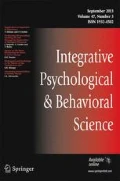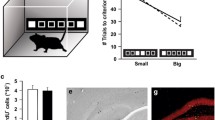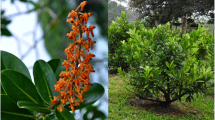Abstract
Previous studies have shown that crude ginseng extracts enhance performance on shock-motivated tasks. Whether such performance enhancements are due to memory-enhancing (nootropic) properties of ginseng, or to other non-specific effects such as an influence on anxiety has not been determined. In the present study, we evaluated both the nootropic and anxiolytic effects of the ginseng saponin Rb1. In the first experiment, 80 five-day-old male chicks received intraperitoneal injections of 0, 0.25, 2.5 or 5.0 mg/kg Rb1. Performance on a visual discrimination task was uvaluted 15 minutes, 24 and 72 hours later. Acquisition of a visual discrimination task was unaffected by drug treatment, but the number of errors was significantly reduced in the 0.25 mg/kg group during retention trials completed 24 and 72 hours after injection. Animals receiving higher dosages showed trends towards enhancement initially, but demonstrated impaired performance when tested 72 hours later. Rb1 had no effect on response rates or body weight. In the second experiment, 64 five-day-old male chicks received similar injections of Rb1 (0, 0.25, 2.5 or 5.0 mg/kg) and separation distress was evaluated 15 minutes, 24 and 72 hours later. Rb1 produced a change in separation distress that depended on the dose and environmental condition under which distress was recorded. These data suggest that Rb1 can improve memory for a visual discrimination task and that the nootropic effect may be related to changes in anxiety.
Similar content being viewed by others
References
Ahlers, S. T., R. Richardson, C. West & D. C. Riccio. (1989). ACTH produces long-lasting recovery following partial extinction of an active avoidance response.Behavioral and Neural Biology, 51: 102–107.
Benishin, C. G., R. Lee, L. C. H. Wang & H. J. Liu. (1991). Effects of ginsenoside Rb1 on central cholinergic metabolism.Pharmacology, 42: 223–229.
Bhargava, H. N. & P. Ramarao. (1991). The effect ofpanax ginseng on the development of tolerance to the pharmacological actions of morphine in the rat.General Pharmacology, 22: 521–525.
Bhattacharya, S. K. & S. K. Mitra. (1991). Anxiolytic activity ofpanax ginseng roots: An experimental study.Journal of Ethnopharmacology, 34: 87–92.
Cha, X. Y. & J. L. Tian. (1987). Improvable effect of Chinese ginseng stem leaves on saponins on the memory of mice treated with electro footshock.Chinese Traditional Herbal Drugs, 18: 306–308.
Deyo, R. A. & J. M. Hittner. (1995). Effects of the Ca2+ channel antagonist flunarizine on visual discrimination learning.Neurobiology of Learning and Memory, 64: 10–16.
Deyo, R. A., J. Panksepp & R. L. Conner. (1990). Nimodipine alters acquisition of a visual discrimination task in chicks.Behavioral and Neural Biology, 53: 149–152.
Huong, N. T. T., K. Matsumoto, K. Yamasaki, N. M. Duc, N. T. Nham & H. Watanabe. (1995). Crude sponin extracted from Vietnamese ginseng and its major constituent majonoside-R2 attenuate the psychological stress and foot shock stress induced antinociception in mice.Pharmacology Biochemistry and Behavior, 52 (2): 427–432.
Kanazawa, H., Y. Nagata, Y. Matsushima, M. Tomoda & N. Takai. (1990). Preparative high-performance liquid chromatography on chemically modified porous glass. Isolation of saponins from ginseng.Chemical and Pharmaceutical Bulletin, 38: 1630–1632.
Kimura, T., P. A. Saunders, K. S. Kim, H. M. Rheu, K. W. Oh & I. K. Ho. (1994). Interactions of ginsenosides with ligand-bindings of GABAA and GABAB receptors.General Pharmacology, 25: 193–199.
Lasarova, M. B., A. H. Mosharrof, V. D. Petkov, V. L. Markovska & V. V. Petkov. (1987). Effect of piracetam and of standardized ginseng extract on the electroconvulsive shock-induced memory disturbances in “stepdown” passive avoidance.ACTA Physiologica, 13: 11–17.
Nah, S. Y. & E. W. McCleskey. (1994). Ginseng root extract inhibits calcium channels in rat sensory neurons through a similar path, but different receptor, as μ-type opioids.Journal of Ethnopharmacology, 42: 45–51.
Normansell, L. & J. Panksepp. (1990). Effects of ACTH1–24 and ACTH/MSH4–10 on isolation-induced distress vocalization in domestic chicks.Peptides, 11: 915–919.
Panksepp, J., N. J. Bean, P. Bishop, T. Vilberg & T. L. Sahley. (1980). Opioid blockade and social comfort in chicks.Pharmacology Biochemistry and Behavior, 13: 673–683.
Panksepp, J., T. Vilberg, N. J. Bean, D. H. Coy & A. Kastin. (1978). Reduction of distress vocalization in chicks by opiate-like peptides.Brain Research Bulletin, 3: 663–667.
Petkov, V. D., R. Kehayov, S. Belcheva, E. Konstantinova, V. V. Petkov, D. Getova & V. Markovska. (1993). Memory effects of standardized extracts ofpanax ginseng (115), ginkgo biloba (GK 501) and their combination gincosan (PHL-00701).Planta Medica, 59: 106–114.
Ramarao, P. & H. N. Bhargava. (1990). Antagonism of the acute pharmacological actions of morphine by panax ginseng extract.General Pharmacology, 21: 877–880.
Saito, H. & T. T. Bao. (1984). Effects of red ginseng, vitamins and their preparations (II)-effect of sex and learning behaviors in stressed male mice. Japanese Journal of Pharmocology and Therapeutics, 12 (20).
Saito, H., M. Ysuchiya, S. Naka & K. Takagi. (1977). Effects of Panax ginseng root on conditioned avoidance response in rats.Japanese Journal of Pharmacology, 27: 509–516.
Takahashi, M., S. Tokuyama & H. Kaneto. (1992). Anti-stress effect of ginseng on the inhibition of the development of morphine tolerance in stressed mice.Japanese Journal of Pharmacology, 59: 399–404.
Wong, M., K. Delaney & A. Gelperin. (1991). Opiate agonists activate feeding in Limax: Comparison of in vivo and in vitro effects.Behavioral Neuroscience, 105: 15–24.
Yobimoto, K., K. Matsumoto, N. T. Huong, R. Kasai, K. Yamasaki & H. Watanabe. (2000). Suppressive effects of vietnamese ginseng saponin and its major component majonoside-R2 on psychological stress-induced enhancement of lipid peroxidation in the mouse brain.Pharmacology Biochemistry and Behavior, 66 (3): 661–665.
Yoon, S. R., J. J. Nah, Y. H. Shin, S. K. Kim, K. Y. Nam, H. S. Choi & S. Y. Nah. (1998). Ginsenosides induce differential antinociception and inhibit substance P induced-nociceptive response in mice.Life Sciences, 62 (21): L319–325.
Zhang, J. T., Z. W. Qu, Y. Liu & H. L. Deng. (1990). Preliminary study on antiamnestic mechanism of ginsenoside Rg1 and Rb1.Chinese Medical Journal, 103: 932–938.
Zhao, R. & W. McDaniel. (1998). Ginseng improves strategic learning by normal and brain-damaged rats.NeuroReport, 9: 1619–1624.
Zhong, Y. M., H. Nishijo, T. Uwano, R. Tamura, K. Kawanishi & T. Ono. (2000). Red ginseng ameliorated place navigation deficits in young rats with hippocampal lesions and aged rats.Physiology & Behavior, 69 (4–5): 511–525.
Author information
Authors and Affiliations
Corresponding author
Rights and permissions
About this article
Cite this article
Churchill, J.D., Gerson, J.L., Hinton, K.A. et al. The nootropic properties of ginseng saponin Rb1 are linked to effects on anxiety. Integrative Physiological & Behavioral Science 37, 178–187 (2002). https://doi.org/10.1007/BF02734180
Issue Date:
DOI: https://doi.org/10.1007/BF02734180




